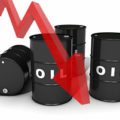The price of oil surged during March, gaining about 50%. However, so far during the month of April, its price has been stagnant. Crude has almost flat lined since its March surge, oscillating largely between $36 and $40 USD per barrel. This would suggest that all the talk about the oversupply being absorbed, ran into a barrier. However many experts have suggested that this behavior can be largely due to speculation, the OPEC-Russia supply deals and interest rates in the US. In fact, some analysts have been even more bullish on oil, arguing that the assumptions made by the IEA on the supply and demand of oil have skewed the data.
OPEC-Russia Deals
Media has focused its attention mainly on production freeze agreements between OPEC and Russia in order to boost the price of oil. However, if there indeed is an oil glut, freezing production at historically high rates will do little to subdue supply. The only OPEC-Russia agreement that could fundamentally change the price of oil, would be a production cut agreement. There is little reason to believe that such an agreement is likely and if it is drafted and signed against all odds, chances are it will not be implemented.
Price Driven by Demand
Supply agreements between OPEC and Russia have not changed the fundamentals of the price of oil as much as the forces of the market have. The fact that price was driven down by a glut, has forced many producers out of OPEC out of the markets. Production in non-OPEC countries has fallen since July 2014. However, demand for fossil fuels keeps on growing, even if it grows at a slower pace. This means that the demand will swallow the oversupply eventually forcing prices to go up.
Double Whammy
Once demand catches up with oversupply, the loss of production outside of OPEC countries will generate additional upward pressure for the price of oil. Currently investment in exploration and development of new fields has decreased significantly. This means that the world does not have the capability needed to react to a bigger than expected spike in demand on time to keep prices stable. All this points to a scenario in which oil prices recover a lot of the ground they have lost since 2014.
Interest Rate Hikes Could Cool Recovery Down
The main factor that can put downward pressure on the price of crude is an increase in interest rates in the US. Since oil prices are largely denominated in USD, once interest rate hikes lead the greenback to appreciate, oil price will respond accordingly with a downward adjustment. The caveat is that demand for oil, and decreasing oversupply, can weigh heavier on oil price than interest rate hikes in the US.
Going Forward
Investors must keep an eye on interest rates and planned Fed increases, without disregarding data on oil demand and data on oil supply levels. A good proxy for data on demand could be industrial production as well as job figures – particularly in the US. A good measure for supply beyond the amount that each oil producing country reports, is the price for oil storage – low price shows that there is no oversupply, if and only if new storage hasn’t come online. Investors should be looking at these numbers and analyzing the data before they make their minds up about the oil glut and decide if they are bullish or bearish on oil.





